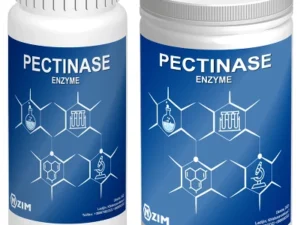Description
Glutaminase: The Key Enzyme in Glutamine Metabolism and its Multifaceted Roles
Glutaminase, an enzyme that catalyzes the hydrolysis of glutamine to glutamate and ammonia, plays a vital role in cellular metabolism and homeostasis. While seemingly a simple reaction, the implications are far-reaching, influencing everything from energy production and acid-base balance to neurotransmission and immune function. This article delves into the multifaceted roles of glutaminase, exploring its mechanisms, regulation, and significance in health and disease.
The Basic Reaction and its Importance:
At its core, glutaminase facilitates the conversion of glutamine, the most abundant amino acid in plasma, into glutamate and ammonia.
Glutamine + H2O –> Glutamate + NH3
This reaction is crucial for several reasons:
- Glutamate Production: Glutamate is a vital neurotransmitter in the brain, playing key roles in learning, memory, and synaptic plasticity. It’s also a precursor to γ-aminobutyric acid (GABA), the primary inhibitory neurotransmitter in the central nervous system.
- Ammonia Production: While ammonia is toxic in high concentrations, it’s a valuable source of nitrogen for synthesizing nucleotides, amino acids, and other essential biomolecules. Furthermore, in the kidneys, ammonia helps to excrete excess acid, maintaining proper pH balance.
- Energy Source: Glutamine serves as an important fuel source for rapidly dividing cells, including enterocytes in the small intestine, lymphocytes, and cancer cells. Glutaminase is essential in breaking down glutamine to provide energy through oxidative phosphorylation.
Isoforms and Tissue Specificity:
Glutaminase exists in multiple isoforms, each with distinct tissue distributions and enzymatic properties. The two major isoforms are:
- Kidney-type glutaminase (GLS1): Predominantly expressed in the kidneys, brain, and some tumors. It plays a crucial role in renal ammoniagenesis and neuronal excitability. Within the kidney, it helps maintain acid-base balance by producing ammonia that buffers acidic urine.
- Liver-type glutaminase (GLS2): Predominantly expressed in the liver and brain. It primarily functions to maintain glutamate levels and support ureagenesis, helping to detoxify ammonia into urea.
The differential expression of these isoforms highlights the tissue-specific roles of glutaminase in various metabolic processes.
Regulation of Glutaminase Activity:
Glutaminase activity is tightly regulated to ensure optimal cellular function and prevent imbalances that can lead to disease. Regulation occurs at several levels:
- Gene Expression: The expression of GLS1 and GLS2 genes can be influenced by various factors, including hormones, growth factors, and nutrient availability.
- Allosteric Regulation: Glutamate, the product of the glutaminase reaction, acts as a negative allosteric regulator of GLS1, providing feedback inhibition. Phosphate ions can act as activators.
- Post-Translational Modifications: Phosphorylation and other post-translational modifications can modulate glutaminase activity and stability.
Glutaminase in Disease:
Given its critical role in metabolism, glutaminase dysregulation is implicated in several diseases:
- Cancer: Cancer cells often exhibit increased glutaminase activity to fuel their rapid proliferation and growth. This phenomenon, known as “glutamine addiction,” makes glutaminase a potential therapeutic target. Inhibiting glutaminase can disrupt cancer cell metabolism and induce cell death.
- Neurodegenerative Diseases: Altered glutamate metabolism and excitotoxicity, often linked to glutaminase activity, are implicated in neurodegenerative diseases such as Alzheimer’s disease, Parkinson’s disease, and Huntington’s disease.
- Kidney Disease: Aberrant glutaminase activity in the kidneys can contribute to acid-base imbalances and the progression of kidney disease.
- Hyperammonemia: While not directly caused by glutaminase deficiency, disruptions in the urea cycle that prevent proper ammonia detoxification can lead to hyperammonemia, exacerbated by excessive glutaminase activity.
- Epilepsy: Dysregulation of glutamate and GABA levels, often influenced by glutaminase, is implicated in epilepsy.
Targeting Glutaminase for Therapeutic Interventions:
The involvement of glutaminase in various diseases has spurred research into developing glutaminase inhibitors as potential therapeutic agents. Several inhibitors, such as CB-839 (Telaglenastat), have shown promise in pre-clinical and clinical studies, particularly in cancer. However, challenges remain in developing highly specific inhibitors that can target particular glutaminase isoforms without causing unwanted side effects.
Future Directions:
Further research is needed to fully elucidate the complex regulatory mechanisms governing glutaminase activity and its precise roles in various tissues and disease states. A deeper understanding will pave the way for developing more effective and targeted glutaminase inhibitors to treat cancer, neurodegenerative diseases, and other conditions. Future research will likely focus on:
- Developing more specific inhibitors for GLS1 and GLS2.
- Understanding the role of glutaminase in different cancer subtypes and identifying biomarkers for patient selection.
- Investigating the potential of glutaminase inhibitors in combination with other therapies.
- Exploring the role of glutaminase in other diseases, such as diabetes and cardiovascular disease.
Conclusion:
Glutaminase is a crucial enzyme that impacts a wide range of physiological processes. From fueling cell growth and maintaining acid-base balance to modulating neurotransmission, its role in cellular metabolism is undeniable. Understanding the intricacies of glutaminase regulation and function is essential for developing effective therapeutic strategies for various diseases, highlighting the importance of continued research in this field. As research progresses, we can expect to see more targeted and effective therapies emerge, utilizing the power of enzyme manipulation to combat complex diseases.











Reviews
There are no reviews yet.